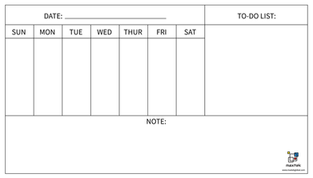Whiteboard Maintenance & Cleaning Tips
Regular cleaning ensures dry-erase ink doesn’t exist on the whiteboard for too long. It is an essential way to optimize a good writing experience on your whiteboard. For everyday cleaning, a felt whiteboard eraser or microfiber towel is already enough for normal markings. Moreover, a damp cloth would be a great tool for thorough cleaning. However, if you happen to leave some “permanent marks”, here are some tips for cleaning and maintaining your whiteboard.
1. Always remember to clean your dry eraser.
2. Color over with dry-erase markers to remove old stains.
3. Use the correct materials to clean.
-Isopropyl rubbing alcohol:
-Water mixed with drops of mild dish soap:
-
Mixing clean water and a few drops of mild dish soap is one of the easiest methods to clean your whiteboard since these two materials can be commonly found in our daily life.
-
Dampen a cloth with the mixture and gently scrub the stained area.
-
Rinse the cloth with clean water and wipe away any dish soap residue on the whiteboard.
-
Drying the surface thoroughly with a dry cloth.
-
Notice: be sure to use transparent dish soap rather than colored one.
If you are also curious about materials that shouldn’t be used for cleaning whiteboards, please check our blog: Materials Should Avoid Using To Clean A Whiteboard
4. Recap: whiteboard cleaning steps.
Here is a simple conclusion of cleaning steps you can follow:
1. Never forget to clean your eraser. A dirty eraser can be the source of all problems and don’t miss cleaning the marker tray as well if you often put your eraser on it.
2. Prepare the correct tools and materials: You will need a soft cloth (a microfiber cloth is the best choice), water, and the cleaner we mentioned above.
3. First, wipe the stains with an eraser or a clean soft cloth. Wipe gently in a circular motion to avoid smudging the ink.
4 Dampen a clean cloth with the correct mixed cleaner. The cloth should be slightly moist, don’t soak the whole cloth in the liquid.
5. Gently wipe the surface of the board with horizontal or vertical strokes. Avoid being too hard to avoid damaging the surface.
6. After cleaning the entire surface, rinse the cloth with clean water, and then wipe the board again to remove any residue.
7. Dry the board thoroughly with a dry and clean cloth. Make sure no moisture remains on the surface.
8. Always remember that the board should be completely dry before the next use.









